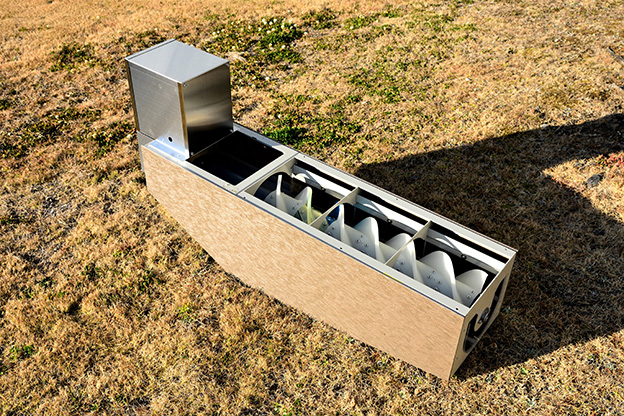Ricoh Power 3D Prints Power Generators for Sewage Plants
In an exciting development for energy decarbonization, Japanese imaging and electronics company Ricoh has used 3D printing to make compact, light, and efficient power generators. Made in conjunction with Japan’s Ministry of Land, Infrastructure, Transport and Tourism (MLIT) along with Seabell Incorporated and Masashi YAMABE – Masahiro SETO Laboratory at Department of Mechanical Engineering, Kanazawa Institute of Technology, these hydroelectric power units were successfully deployed at sewage treatment facilities, where they were able to make waste treatment more efficient.
By using less energy and fewer materials, with an overall lighter design, these kinds of mini hydroelectric pumps could be used across the world in sewage treatment. Although this may seem like a small project there are currently estimated to be over 109,000 water treatment facilities worldwide. This indicates that these generators may yet find a significant market and account for a lot of power made and saved. By producing energy close to where it is used, they are also very efficient and provide for another path to power apart from photovoltaics and wind.
To make the generators, Ricoh relied on its internal 3D printing capacity and printers. The unit chassis was 15% lighter than conventionally manufactured metal units while blades weighed a quarter less. The blades themselves were made from biomass derived materials, while also demonstrating twice the strength of traditional counterparts one 3D printed with standard polymers. Relatedly, the company previously released its Life Parts biomass-based resins. The blades were tested for an extended period and acquitted themselves well. There was also a considerable lead time improvement with the 3D printed variants taking just three days to produce, rather than the month that hydroelectric power units usually take to make.
The researchers are looking for the generators to fulfill a niche in emergency power supply and in powering all manner of small robotics at the plants. The market opportunity is focused on Japan but also Europe, the US and beyond. Previously in 2022 Ricoh has launched Life Parts a rental service for 3D printed pico hydroelectric power generators. This initiative allows customers to use these water power generators at events or seasonally. The Life Parts service could also be used to generate efficient, local power or electricity in deprived areas. Ricoh also saw it as a way to generate power for IoT (Internet of Things) sensors and lights, as well as security cameras, mobile phones and lighting.
This may seem like a niche product but I believe that Ricoh is really on to something here. For remote communities, remote sensors and remote houses, industrial installations, camp grounds, islands, inner-city slums, austere areas and more new power generation concepts would be very sorely needed. Photovoltaics are of course amazing but we need complimentary technologies. In fast running streams or in sewer drains continuous power could be on the offing even when the sun doesn’t shine. I also love the idea of renting out this kind of device. This would make it available to poorer communities and for those who have seasonal requirements. The potential in this technology is considerable. If we look broader at power generation, hydroelectric power generation, wind powder generation and generators generally I believe that this is one of the biggest opportunities for 3D printing. There are multiple billions to be had in making cost effective, light, optimized power generation devices.
Subscribe to Our Email Newsletter
Stay up-to-date on all the latest news from the 3D printing industry and receive information and offers from third party vendors.
Print Services
You May Also Like
Low-cost “Suzy” Polymer Powder 3D Printer is Faster and Cheaper than Past Models
Polish laser powder bed fusion (LPBF) firm Sinterit has released a follow-up to its predecessors, Lisa and Nils, called Suzy, a $19,490 printer equipped with a 30W fiber diode laser....
India’s $58M Space Fund Is a Boon for AM Innovation
India’s space industry is picking up serious momentum. With a projected $44 billion space economy by 2033, the country is aggressively expanding its capabilities, fostering private-sector participation, and reducing its...
Japanese Advanced Manufacturing Capabilities Grow in Europe with Sodick’s Purchase of Prima Additive
The global economy is currently undergoing a reshuffling in terms of what gets manufactured where. In large part, this trend is being driven by new geopolitical alliances and the need...
Bosch Invests €6M into Serial Auto Part 3D Printing
German industrial conglomerate Robert Bosch GmbH, the world’s largest supplier of automotive parts, has announced a new investment into Nuremberg, Germany additive manufacturing (AM) facility. The nearly €6 million in...






























